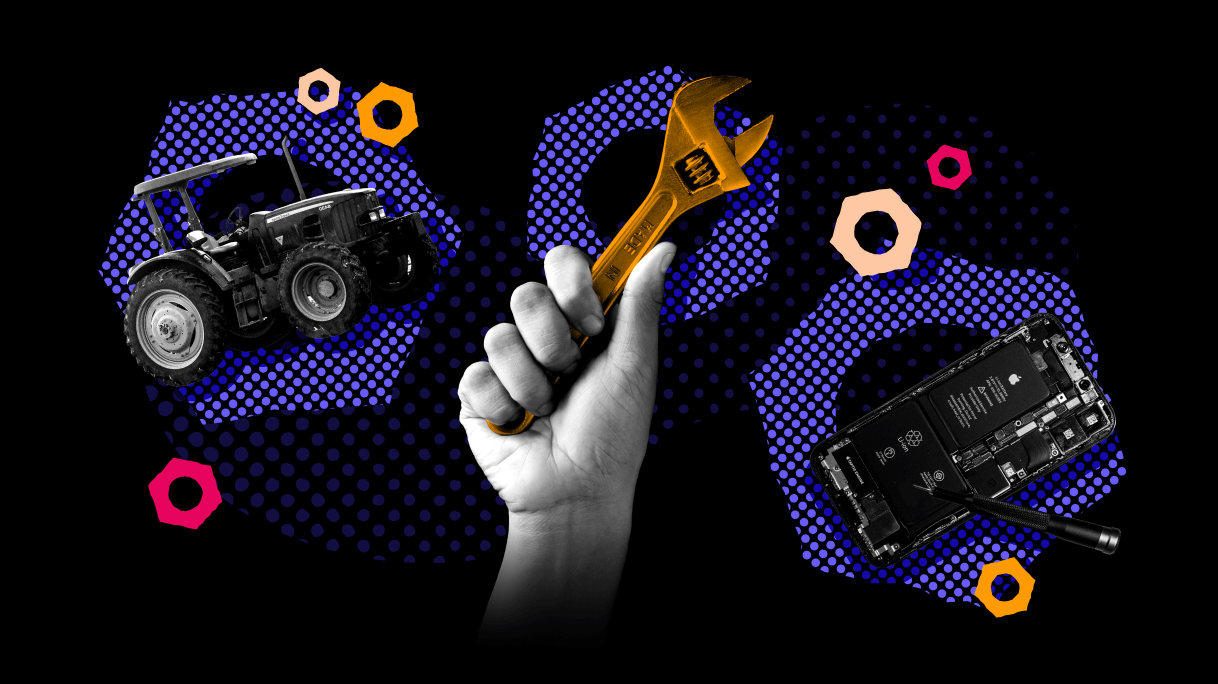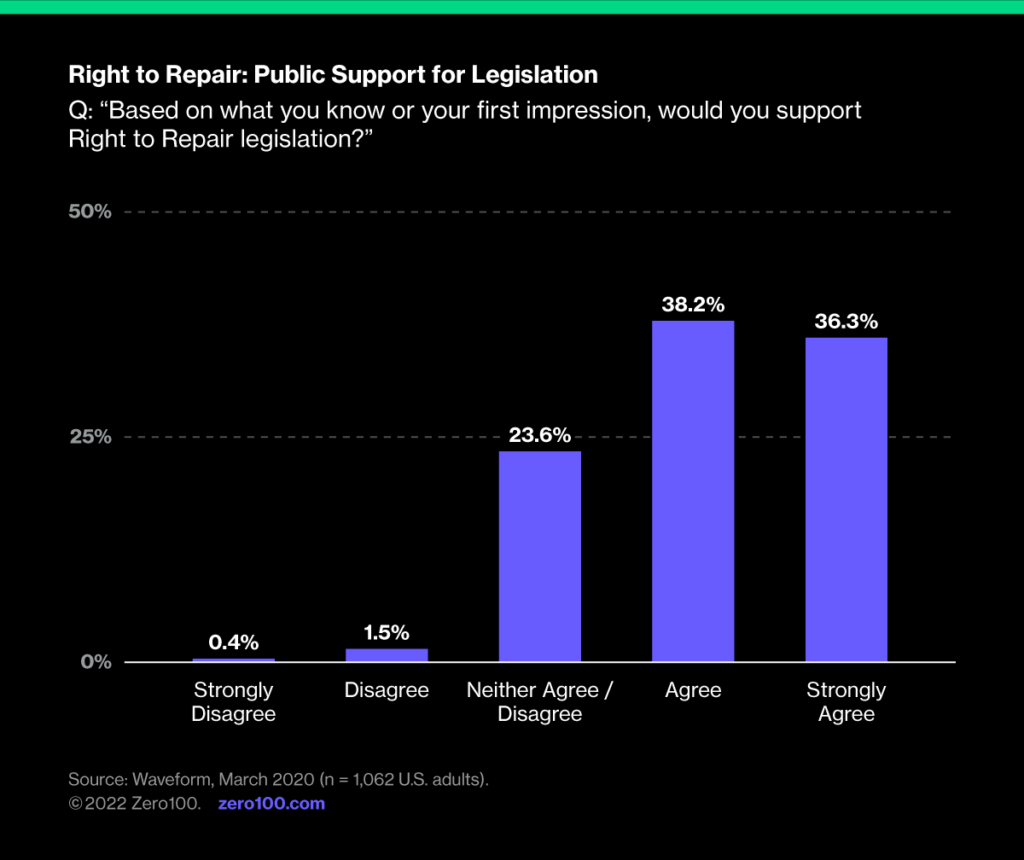
Right to Repair Is a Business Puzzle, Not a Legal Principle
Right to repair has legs not only because it seems fair, but because it promises to make things last longer. Moving past our throwaway culture is a step toward renewable business models that build shareholder value while also reducing waste to landfills.
Right to repair is a movement, legislative wave, and well-meaning idea that says people who buy durable products like mobile phones, tractors, and dishwashers should be allowed to get them fixed by someone other than the original equipment manufacturer (OEM). This sounds reasonable, and yet the corporate opposition is coming from brands many people trust and love like John Deere, Apple, and General Electric.
Maybe the problem is that we’re trying to solve a relationship problem with a divorce settlement. No one wins but the lawyers.
Dear John Deere, Please Let Me Fix My Tractor
At the State University of New York in Cobleskill, college kids study agricultural equipment in a long-standing partnership with John Deere. The students wear caps and sweatshirts with the Deere logo proclaiming their love and loyalty for the brand. The same dedication can be seen with Caterpillar, Husqvarna, and Stihl among the ag-mech and forestry crowd at SUNY Cobleskill.
It’s a familiar phenomenon with brands that customers love and identify with over time – like Harley Davidson, Tesla, and of course Apple. These customers are strong net-promoters with high repurchase rates. They want to be able to fix their treasured tools, vehicles, or electronics and are happy to either do the work themselves or pay to have it done by a repair shop. So, what’s the problem?
The Double-Edged Sword of Digitization
Digitization. There are now huge amounts of embedded diagnostic and control electronics, plus telematics that stream performance information over the cloud, and, in some cases, remote control capabilities that can literally plow a field without a driver. These advances make things possible that sound great to a customer, like an iPhone’s tracking capability, for instance, or a Tesla’s charging station locator.
Unfortunately, digitization also adds to the complexity and cost of servicing equipment. Manufacturers generally want to keep all this digital information in-house, with repairs only available at authorized service dealers. Right to repair advocates see this as being all about money and restricting competition from independent repair shops. The retort from OEMs like Deere is that there are safety, quality, and intellectual property risks in letting any old tinkerer have access to the data.
Both are right.
Don’t Solve It at the Polls, or in the Courts
From a supply chain perspective, the right answer lies somewhere between unfettered access to equipment data and the stranglehold activists fear. Diagnostic data is good for analyzing part failure tendencies which should improve forecasting for manufacturing and inventory placement of spares. Over time the same kind of data will help design new variants or models that perform better and last longer. For the customer’s benefit, such digitally equipped products can be preemptively maintained to avoid failing at crucial moments like harvest time for a tractor or family reunion time for a refrigerator.
And yet, if the only place to get parts or find a trained technician is through an OEM’s wholly owned dealers, the pitch starts to fall apart since people want immediate, local service. Franchisees, licensed service technicians, and value-added resellers have traditionally met this need as allies, rather than rivals to the OEMs.

Ballot initiatives in Colorado, Maine, New York, and Massachusetts, and another dozen states are gaining ground however, and pitting the two against each other. The result could be a mess if different rules became law in a checkerboard of state-level hassles. One logical approach is national legislation, but even that doesn’t solve for international complexity.
Follow the Money
Happily, cooler heads are prevailing. Deere has closed an agreement with the American Farm Bureau Federation to make its data available for third party repairs. Meanwhile, both Apple and Samsung have increased the availability of replacement parts for some of their products.
Right to repair has legs not only because it seems fair, but because it promises to make things last longer. Moving past our throwaway culture is a step toward renewable business models that build shareholder value while also reducing waste to landfills. It is a sustainability pitch that should save customers money, but it won’t succeed unless OEMs make money too.
Legislation may prime the pump, but this is about good business first.